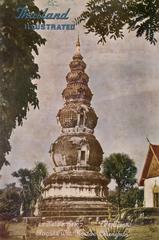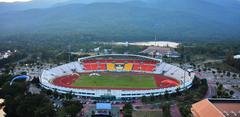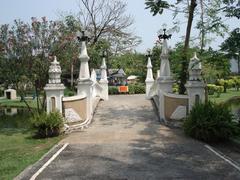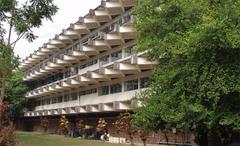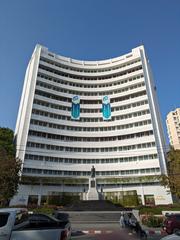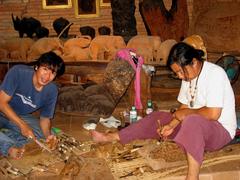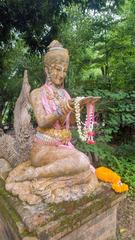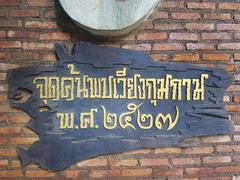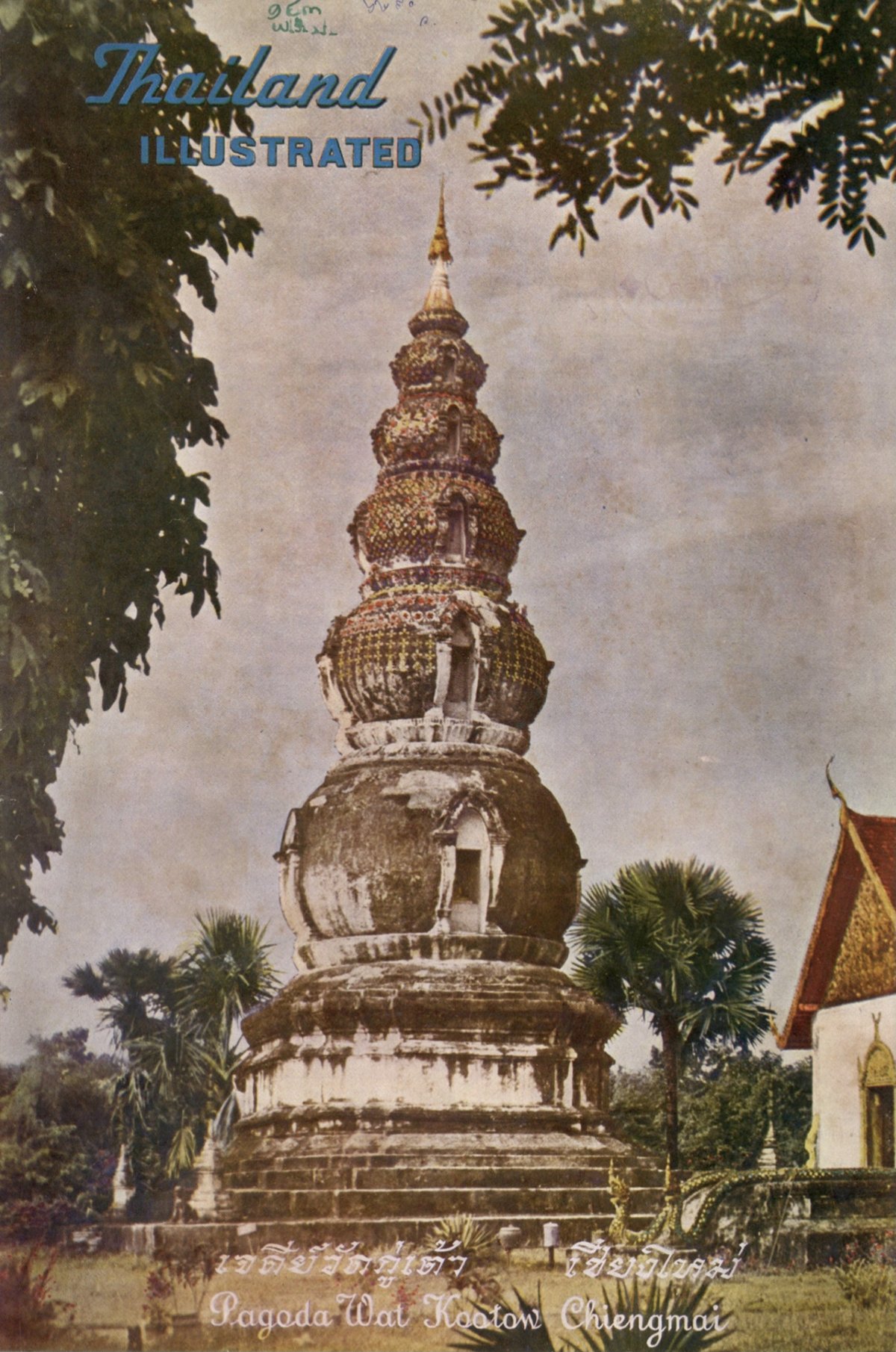
Comprehensive Guide to Visiting Wat Ku Tao, Mueang Chiang Mai, Thailand
Date: 25/07/2024
Introduction
Nestled in the heart of Mueang Chiang Mai, Thailand, Wat Ku Tao stands as a beacon of historical, architectural, and cultural significance. Known for its unique Yunnanese-style chedi, this Buddhist temple has been a vital part of Chiang Mai’s landscape since its construction in 1613. The temple was built to enshrine the remains of Nawrahta Minsaw, the first Burmese ruler of Lan Na, reflecting a period of Burmese influence in Northern Thailand (Wikipedia). Wat Ku Tao’s architecture is a blend of Burmese and Lanna styles, showcasing the cultural exchange between these regions. Its five-tiered chedi, designed in the shape of diminishing spheres, symbolizes the five historical and future Buddhas, making it a site of deep spiritual significance (Chiang Mai Travel Hub). The temple also serves as a cultural and religious center for the Shan community, an ethnic group from the Shan State in Myanmar, highlighting the multicultural fabric of Chiang Mai (Chiang Mai Alacarte). This comprehensive guide will delve into the historical background, architectural significance, visitor information, and cultural importance of Wat Ku Tao, making it an indispensable resource for anyone planning to explore this remarkable site.
Table of Contents
- [Historical Background of Wat Ku Tao](#historical-background-of-wat-ku-taohistorical-background-of-wat-ku-tao)
- [Origins and Construction](#origins-and-constructionorigins-and-construction)
- [Architectural Significance](#architectural-significancearchitectural-significance)
- [Burmese Influence](#burmese-influenceburmese-influence)
- [Historical Events and Cultural Significance](#historical-events-and-cultural-significancehistorical-events-and-cultural-significance)
- [Restoration and Preservation](#restoration-and-preservationrestoration-and-preservation)
- [Medicinal Properties and Spiritual Healing](#medicinal-properties-and-spiritual-healingmedicinal-properties-and-spiritual-healing)
- [Modern-Day Relevance](#modern-day-relevancemodern-day-relevance)
- [Visitor Information](#visitor-informationvisitor-information)
- [Visiting Hours and Ticket Prices](#visiting-hours-and-ticket-pricesvisiting-hours-and-ticket-prices)
- [Accessibility and Visitor Information](#accessibility-and-visitor-informationaccessibility-and-visitor-information)
- [Visitor Tips](#visitor-tipsvisitor-tips)
- [Special Events and Guided Tours](#special-events-and-guided-toursspecial-events-and-guided-tours)
- [Frequently Asked Questions (FAQ)](#frequently-asked-questions-faqfrequently-asked-questions-faq)
- [Conclusion and Call to Action](#conclusion-and-call-to-actionconclusion-and-call-to-action)
Historical Background of Wat Ku Tao
Origins and Construction
Wat Ku Tao, also known as Wat Weruwanaramwiharn, is a Buddhist temple located in Mueang Chiang Mai, Thailand. The temple’s origins date back to the early 17th century, specifically around 1613. It was constructed to enshrine the remains of Nawrahta Minsaw, the first Burmese ruler of Lan Na, a historical kingdom in northern Thailand (Wikipedia). The temple’s name, ‘Ku Tao,’ derives from the northern Thai word ‘Ku,’ which means a place that contains ash and bones after cremation, and ‘Tao,’ which means melon or ash (Travel and History).
Architectural Significance
The most distinctive feature of Wat Ku Tao is its unique chedi (stupa), which is designed in the shape of five stacked watermelons, each sphere diminishing in size as they ascend. This design is believed to represent the five historical and future Buddhas. The chedi’s architecture is heavily influenced by the Yunnanese style, reflecting the cultural exchanges between the local Thai and Chinese communities through trade routes in Asia (Chiang Mai Travel Hub). The chedi is adorned with intricate carvings and colorful tiles, making it a visually captivating structure (Omeeyo).
Burmese Influence
The temple’s architecture and interior decor showcase a strong influence of Burmese artistic traditions. This is evident in the enshrined Buddha images and the overall design of the temple buildings. The Burmese influence is attributed to the period when Chiang Mai was under Burmese rule, and the temple served as a significant religious and cultural center for the Burmese community in the region (Chiang Mai Dot Net).
Historical Events and Cultural Significance
Wat Ku Tao has played a crucial role in the religious and cultural life of Chiang Mai. It is particularly significant for the Shan community, also known as the Tai Yai, who are an ethnic group from the Shan State in Myanmar. The temple is one of the two main Shan temples in Chiang Mai, the other being Wat Pa Pao. Both temples are central to the annual Poy Sang Long ceremony, a traditional Shan festival that involves the ordination of young boys as novice monks. This ceremony usually takes place at the end of March or the beginning of April and is marked by colorful parades and elaborate rituals (Chiang Mai Alacarte).
Restoration and Preservation
Over the centuries, Wat Ku Tao has undergone several renovations and restorations to preserve its historical and architectural integrity. Despite these efforts, the temple has managed to retain much of its original charm and significance. The Fine Arts Department has placed an information board at the temple, indicating that the construction background of the temple is somewhat unknown but is believed to have been built during the Burmese occupation of Chiang Saen between the late 16th century and 1804 (Chiang Mai Alacarte).
Medicinal Properties and Spiritual Healing
In addition to its architectural and historical significance, Wat Ku Tao is also known for its association with traditional Thai medicine and spiritual healing. According to local legends, the temple’s founder was a revered monk who possessed extraordinary healing abilities. He imbued the temple with his spiritual power, transforming it into a sacred sanctuary where people could find relief from various ailments. This aspect of the temple continues to attract devotees and visitors seeking solace, blessings, and miraculous cures (In Thailand Wiki).
Modern-Day Relevance
Today, Wat Ku Tao remains a vital part of Chiang Mai’s cultural and religious landscape. It continues to serve the local Shan community and attracts tourists and pilgrims from around the world. The temple’s serene atmosphere, combined with its rich history and unique architecture, makes it a must-visit destination for anyone interested in exploring the cultural heritage of northern Thailand (Lonely Planet).
Visitor Information
Visiting Hours and Ticket Prices
Wat Ku Tao is open daily from 6:00 AM to 6:00 PM. There is no entrance fee to visit the temple, although donations are appreciated to help with the upkeep and maintenance of the temple grounds. Special events, such as the Poy Sang Long festival, may have different visiting hours or temporary closures, so it is advisable to check ahead if planning to visit during these times (Chiang Mai Travel Hub).
Accessibility and Visitor Information
Wat Ku Tao is conveniently located in the heart of Chiang Mai, making it easily accessible for visitors. The temple’s exact address is 201 Ratchamanka Road, Tambon Si Phum, Amphoe Mueang Chiang Mai, Chang Wat Chiang Mai 50200. Visitors can reach the temple by taking a tuk-tuk or a songthaew from the city center, which should cost around 50-100 baht. Alternatively, renting a bicycle or a motorbike is a popular option for exploring the city and visiting the temple at one’s own pace. The temple grounds have ample parking space available for both cars and motorbikes (In Thailand Wiki).
Visitor Tips
When visiting Wat Ku Tao, it is essential to respect the sacredness of the temple. Visitors should dress modestly, covering their knees, shoulders, and midriffs. Shoes must be removed before entering any temple buildings. The best time to visit is during daylight hours to fully appreciate the temple’s architecture and serene atmosphere. Additionally, visitors are encouraged to explore the unique chedi, take photos, and appreciate the craftsmanship that went into its construction (Omeeyo).
Special Events and Guided Tours
The temple hosts several special events throughout the year, most notably the Poy Sang Long festival, which involves the ordination of young boys as novice monks. This event usually takes place at the end of March or beginning of April and is a vibrant and colorful celebration. Guided tours are available and can be arranged through local tour operators or directly at the temple. These tours provide in-depth historical context and insights into the temple’s architecture and cultural significance (Chiang Mai Alacarte).
Frequently Asked Questions (FAQ)
Q: What are the visiting hours for Wat Ku Tao?
- A: Wat Ku Tao is open daily from 6:00 AM to 6:00 PM.
Q: Is there an entrance fee for Wat Ku Tao?
- A: No, there is no entrance fee, but donations are appreciated.
Q: What is the best time to visit Wat Ku Tao?
- A: The best time to visit is during daylight hours to fully appreciate the temple’s architecture and serene atmosphere.
Q: Are there guided tours available at Wat Ku Tao?
- A: Yes, guided tours can be arranged through local tour operators or directly at the temple.
Q: What special events take place at Wat Ku Tao?
- A: The most notable event is the Poy Sang Long festival, which usually takes place at the end of March or beginning of April.
Conclusion and Call to Action
Wat Ku Tao stands as a testament to the rich cultural and historical heritage of Chiang Mai. Its unique architecture, historical significance, and spiritual importance make it a fascinating destination for both tourists and devotees alike. Plan your visit today and immerse yourself in the serene beauty and cultural richness of Wat Ku Tao. For more information and updates, follow us on social media and check out our other related posts.
